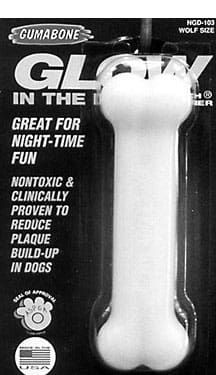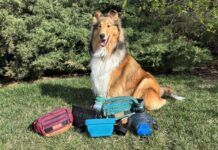Fundraising for nonprofit animal welfare groups is a dog-eat-dog business. Competition for donation dollars is fierce, and animal groups often have to fight tooth and claw to stay solvent while they pursue their various missions to improve the quality of life for animals.
While most animal protection groups rely primarily on individual donations, contributions from local businesses, and grants from various philanthropic sources, one of the latest means of fundraising involves corporate affiliations and endorsements. This explains why, increasingly, one finds pet products with labels that boast an “ASPCA Seal of Approval,” for instance, or why a car commercial might mention the blessing of the Humane Society of the United States (HSUS).
Our concern about this practice is simple: We think it is just too easy for consumers to misunderstand the relationship between allied animal welfare groups and product manufacturers, and to regard any affiliation as a credible recommendation for either involved party.

We can’t imagine that it hurts anyone if a dog owner decides to buy a Saab because of that company’s corporate affiliation with HSUS, but frankly, there are a few endorsements that do trouble us.
The most offensive, from our perspective, are the humane groups’ approval of training and containment systems that utilize shock collars. WDJ is opposed to the use of any kind of training or containment device that utilizes electric shock on the dog – not just because of the shock element itself, but also in the case of electronic containment systems, because of the potential for product failure and the system’s inability to protect the dog from outside threats. (See “Visible Problems,” May 1999, for more information about our opinions of shock collars.)
Consider that both the ASPCA and HSUS are widely known, high-profile animal protection organizations whose missions encompass at least a national, and sometimes global, perspective on animal protection. One would like to imagine that any product stamped with the ASPCA or HSUS logo would have nothing short of the best and purest interests of animals at heart.
But we would guess that few people understand that the appearance of these logos on a product has more to do with money changing hands than it does with the literal “endorsement” of the products.
Let’s take a closer look at the biggest players in dog products endorsement, and how the practice has the potential to affect their missions.
The “A”
The ASPCA, founded in 1866, was the first humane organization in the Western Hemisphere. Its mission is “to provide effective means for the prevention of cruelty to animals throughout the United States.”
To this end, the “A”, as it is known in animal welfare circles, has programs that include direct animal care (with an animal hospital and adoption facility in New York City); enforcement of humane laws in NYC, influencing legislation in the state and federal arenas; distribution of humane education materials nationwide; administration of a toll-free service for animal behavior and veterinary information; and management of the National Animal Poison Control Center telephone hotline. In recent years, the ASPCA relinquished its long-standing animal control contract with New York City in order to focus on other programs, and it opened an office in Los Angeles, California, to facilitate its reach across the country to the West Coast.
The ASPCA has one of the most ambitious corporate affiliate programs of any of the high-profile animal organizations. They offer a variety of corporate and product licensing opportunities that include:
Spokescharacter licensing – A partnership with the Creative Resources Division of The Disney Company that creates animated characters that help finance the Society’s mission. Companies such as Ames Department Stores, Crown Crafts, Stevens Linen, Color Fantasy and Ashleigh Manor pay the ASPCA to have characters like Purrsilla the cat, Fremont the dog, and Harry the horse promote and sell their products in advertising campaigns. The products need not have anything to do with animals.
Name and logo licensing – Banking on the concept that the ASPCA name is a widely recognized icon with broad-based appeal, manufacturers who produce merchandise for animals and/or animal lovers can pay for the privilege of placing the ASPCA logo on their products. Participants in this program include Golden Turtle Press, Anita Lang, and FAO Schwartz.
ASPCA “Seal of Approval” – Manufacturers who wish to use the ASPCA Seal of Approval submit their products to the ASPCA’s Animal Science Review Committee to determine whether the product is one that the organization wishes to recommend. The Review Committee is made up of veterinarians, veterinary toxicologists, behaviorists, and ASPCA administrators. Current “Seal of Approval” companies include Johnson Pet-Dor, T.F.H./Nylabone, Prestone Products, and the Invisible Fence Pet Protection Company.

We were happy to hear that “Seal of Approval” decisions were made by a review committee made up of animal health and training professionals. However, according to a staff member of the ASPCA (who asked to remain anonymous), in at least one critical instance – the decision to confer the ASPCA Seal of Approval on the Invisible Fence products – the committee’s approval process was circumvented, to the dismay of staffers who are opposed to shock products.
According to Amy Lieberman, Licensing and Merchandising Coordinator for the ASPCA, details of the financial arrangements with affiliated companies vary. Commonly, it is based on a royalty/percentage agreement that ranges from 1-15 percent of sales. About 60 companies participate in the Seal of Approval and Name and Logo programs.
HSUS
The Humane Society of the United States describes itself as “America’s leading animal protection organization.” With 250 staff members and annual expenses in the neighborhood of $37 million (1998 fiscal year), that’s probably an accurate description. HSUS does not operate any hands-on shelters or animal care facilities, but instead directs its resources primarily toward public education and legislative efforts, with occasional assistance to local independent shelters in the areas of humane investigations and disaster relief.
While HSUS Board policy prohibits actual product “endorsements,” they do allow product licensing, sponsoring and corporate partnerships – a fine distinction that is probably lost on the general public and most HSUS supporters. Steve Putnam, HSUS’s Director of Business Development, admits that when they license a company for the use of HSUS’s “name and marks” it does imply some level of tacit approval. According to Putnam, there are 18-20 HSUS licensed products.
Unlike the ASPCA, which has established a committee to review products for potential “Seal of Approval” status, in the HSUS, licensing and partnership decisions can be made by anyone “from the President on down.” While that may be a bit simplified, according to Putnam, contact with an interested company often comes through line staff working in HSUS’s various program groups.
The decision to license is generally based on the economic viability of the agreement and consistency with HSUS’s mission, says Putnam. For example, HSUS turned down a potentially lucrative relationship with a company that sold vitamins and supplements because the parent company was one of the country’s largest factory farms and a leader in multinational agribusiness.
Does money corrupt?
Unfortunately, despite the best intentions of the animal welfare groups, both have formed “corporate partnerships” with companies whose corporate missions are arguably inconsistent with animal welfare organizations. Perhaps the most glaring example involves the manufacturers of electric shock collars, a dog training tool whose mention sparks heated debate among dog trainers.
Trainers who practice compulsion-style training are more likely to accept or even embrace the use of electric shock as a training tool. Trainers who believe in primarily positive reinforcement training and behavior modification (as does WDJ) generally abhor the use of shock collars and consider them to be unnecessary and inhumane.
To the dismay and bewilderment of positive trainers and portions of the humane community, both HSUS and ASPCA are involved in financial relationships with companies who produce electric shock collars for dogs. Positive trainers cringe at the message this sends to the dog owning public that they are trying to reach with their gentler, kinder dog training methods.
The ASPCA partners with and loudly praises Invisible Fence Brand Pet Containment, the original non-visible electric shock containment system, first marketed in 1973.
Several years ago, HSUS entered into a relationship with Radio Systems, another company that produces electric shock training equipment, and the HSUS logo has been prominently displayed on Radio Fence products.
While some in-house HSUS animal experts vehemently defend the electric shock affiliation for dog training purposes, the organization’s own email newsletter, HUMANE-Lines, recently sent a mixed message about HSUS’s position on the humaneness of electric shock. In the July 2000 issue, an article in HUMANE-Lines decried the United States Fish and Wildlife Service’s recent use of shock collars on a Montana wolf pack, calling it a “cruel control tactic.”
Putnam defends HSUS’s Radio Systems affiliation decision. Input on the issue from their Companion Animal Division, he says, was that there is a tremendous problem in communities across the country with dogs running loose, and electronic containment can represent a viable means of dog confinement. The systems are, he added, very popular with consumers, pointing out that Radio Systems actually offers three aversive confinement methods: electric shock, citronella spray, and ultrasonic tone.
However, Putnam also acknowledges that the affiliation with Radio Systems was not popular with some HSUS supporters, and that it hadn’t been as successful a marketing tool as Radio Systems had hoped. According to Putnam, while Radio Systems is still an important sponsor for some HSUS activities, as of January 2000, the HSUS name has been removed from the company’s products. While some old inventory in stores may still bear the HSUS name, Putnam says new inventory does not.
In search of good will
The shock-collar industry has apparently bought the good will of some smaller non-profit animal groups as well. In 1998, the Invisible Fence Pet Containment Company established a $60,000 endowment fund for spay/neuter projects and to encourage the adoption of animals across the country.
The Doris Day Animal League (DDAL) worked with the ASPCA to distribute the money to shelters in 12 cities. In return, an ASPCA source tells us, the Invisible Fence Company requested that recipient shelters mention the Invisible Fence Containment System favorably in their newsletters. DDAL Executive Director Holly Hazard responded to comments from a concerned dog owner by defending the Invisible Fence and describing her successful personal experience keeping her own Beagle confined by use of electric shock. Best Friends Animal Sanctuary, a high-profile “no-kill” animal facility in Kanab, Utah, partnered with Tri-Tronics, another electric shock company. Tri-Tronics sent a trainer to their facility in Utah to shock dogs with behavior problems in an effort to “fix” them. Best Friends touted the success of that program in their May/June 2000 newsletter, representing electric shock as a painless way to eliminate behavior problems.
Full disclosure
There is no doubt that partnerships and affiliations are a valuable source of revenue for important animal protection organizations and programs. In our opinion, however, these well-respected nonprofit organizations would better represent themselves if they fully disclosed the nature of their relationship when they “lent” their good names to commercial products or services. People should clearly understand that the appearance of the humane organization’s logo should not be construed as any sort of guarantee as to the product’s lack of “cruelty to animals.” Dog lovers should be prepared to judge that for themselves.
-By Pat Miller






